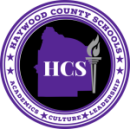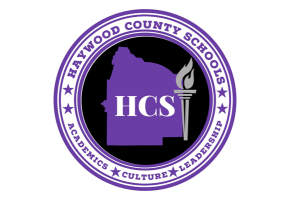The “I am a Reader and Writer Project” is Developing Young Readers in Haywood County
The cornerstone of a solid educational foundation is for a student to be able to read on their grade level. While statistics of how many students read on grade level across the country vary, literacy experts agree that the number of students reading below grade level is concerning. Literacy experts also agree that having a student read on grade level by the fourth grade is vital for future educational success.
Beyond the importance of making reading a fundamental focus of education, Haywood County Schools (HCS) also understands how essential it is to provide equitable reading instruction for all students, and that each student deserves to be taught to read at an early age regardless of what level of reader they are when they arrive at school for the first time.
HCS Director of Elementary Education, Sarah Aitken, explained how partnering with Instruction Partners and the “I am a Reader and Writer Project” can help achieve the district’s goal of having every third grade student in the district reading on grade level by the time they are ready to enter the fourth grade. This project begins in Pre-K and goes through the second grade.
“There’s a process to how students develop reading skills. There are four phases to that process: pre-alphabetic, partial alphabetic, full alphabetic, and consolidated alphabetic. Within each of those phases are three microphases, and that’s our starting point for monitoring student progress,” Sarah explained.
While educational jargon can be confusing at times, mircrophases are simply a tool to better pinpoint where a student’s reading level is based on their initial assessment and allows teachers to begin the process of intervention in the most precise way possible according to the individual student’s needs.
“What we’ve done with the Reader/Writer project is streamlined where students are. If they need additional practice with letters or skill sets, we just extend the learning rather than push them to something else before they’re ready,” Sarah said.
That’s the beauty of individualized learning plans and equitable instruction: it meets the students where they are and allows them to grow in the specific ways they need to grow in that given moment while also instilling authentic confidence in the student as they see themselves advancing in the process of learning.
Like all learning processes for children and adults alike, making mistakes or hitting speed bumps along the way is expected and can be the most effective tool for a teacher to use when teaching.
When students hit these academic speed bumps, personalized intervention plans are in place to help students continue to move forward toward their goal.
“Our intervention time is very focused and student centered,” Sarah said. “We’ve created individualized progress monitoring sheets to help each student continue to progress in their reading skills.”
Regardless of how great a curriculum or educational project is, the people teaching that curriculum are what matters. Each elementary school teacher in HCS is committed to not only reaching the goal of the district, but, more importantly, building the educational foundations for every single HCS student to be as successful as they can be as they move forward in school and in life. Teachers also know that reading is an essential piece to that puzzle.


